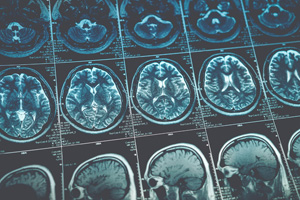Rutgers Neuroscientist Finds a Way to Track and Measure Female Autism, Asperger's
Involuntary head movements, measured in fMRIs, are the key

A Rutgers University study found that tracking and measuring the involuntary head movements revealed in functional magnetic resonance imaging (fMRI) scans offers a new, more accurate way to detect autism in girls.
Rutgers University-New Brunswick neuroscientist Elizabeth Torres said the traditional criteria used to diagnose autism are largely based on the observed behavior of children, and since boys in western society are expected to be active, deviations from that norm are easy to spot. Girls are socialized to be quieter, so autism is harder to observe. Perhaps partly due to these cultural biases, boys are diagnosed with autism five times as often as girls. “The criteria are male-driven, so we’re measuring females with a male ruler,” she said.
In a paper published in Frontiers in Integrative Neuroscience, Torres and her co-authors report on what they found by matching data about involuntary head movements from fMRI scans to diagnoses of autism spectrum disorder. “When you go in an fMRI machine, they tell you to hold still,” she said. “But you can’t hold totally still; nobody can. The machine will pick up involuntary movements that the patient is unaware of and that an observer wouldn’t see with the naked eye.”

Torres, associate professor of psychology in the School of Arts and Sciences, used data from the Autism Brain Imaging Data Exchange (ABIDE) databases, which contain raw information from brain scans collected from laboratories around the world – a guard against the cultural bias inherent in observation. The researchers examined the scans of 2,199 people, all of whom had been diagnosed with autism or Asperger’s syndrome, a relatively mild disorder on the autism spectrum. Three hundred nine of the scans were of females.
Torres says the tools traditionally used to diagnose autism offer no definition of “normal” behavior, nor do they offer standardized scales that can be mapped to the kind of neurophysiological data that comes from fMRI scans. However, involuntary motions, like those measured by fMRI scans, may help clinicians more accurately determine whether and where a person belongs on the autism spectrum.
This is the latest in a series of articles in which Torres has made use of electronic data, either obtained from fMRI scans or from wearable sensors, to study such conditions as autism and stroke.
Torres’ co-authors are Sejal Mistry, a an undergraduate student when the research was done and now a Fulbright Scholar in India; and Caroline Whyatt and Carla Caballero, both post-doctoral researchers in Torres’ laboratory at Rutgers University-New Brunswick.